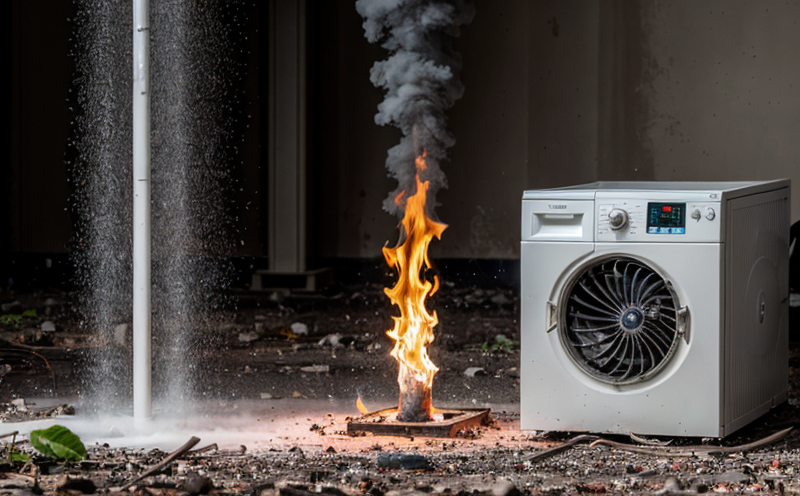DIN EN 50342 Environmental Stress Testing of Lead-Acid Starter Batteries
The DIN EN 50342 standard is specifically designed to evaluate the environmental stress resistance of lead-acid starter batteries. This testing ensures that these critical components can withstand harsh conditions, which are common in automotive and industrial applications.
Lead-acid starter batteries are essential for starting engines, providing backup power during grid failures, and supporting critical systems in various sectors such as automotive manufacturing, construction machinery, and telecommunications infrastructure. The environmental stresses they encounter include extreme temperatures, humidity, vibration, shock, and even chemical exposure. Ensuring that these batteries meet the stringent requirements of DIN EN 50342 is crucial for maintaining operational reliability and safety.
The standard covers a wide range of tests that simulate real-world conditions to assess battery performance under various environmental stresses. These include cold storage tests, vibration testing, salt fog exposure, and accelerated aging processes. Compliance with this standard ensures that batteries are robust enough to perform reliably in challenging environments.
Testing according to DIN EN 50342 is particularly important for quality managers, compliance officers, R&D engineers, and procurement professionals who need to ensure the reliability and safety of their products. By adhering to these standards, manufacturers can enhance product performance while reducing the risk of failure in harsh operating conditions.
The testing procedure involves subjecting batteries to controlled environmental stressors that mimic actual usage scenarios. This approach ensures that any potential weaknesses or vulnerabilities are identified early on, allowing for necessary adjustments and improvements before widespread deployment.
Compliance with DIN EN 50342 is essential for companies operating in the automotive, industrial, and telecommunications sectors. It helps to ensure product safety, reliability, and compliance with international regulations. This standard plays a critical role in maintaining trust between manufacturers, distributors, and consumers by ensuring that products meet the highest quality standards.
| Environmental Stress Factor | Testing Criteria |
|---|---|
| Cold Storage Testing | Exposure to temperatures below -20°C for extended periods. |
| Vibration Testing | Subjecting batteries to controlled vibration environments. |
| Salt Fog Exposure | Testing the battery's resilience in high-humidity, corrosive conditions. |
| Accelerated Aging Processes | Simulating long-term use to predict lifespan and performance over time. |
Scope and Methodology
The scope of DIN EN 50342 covers the environmental stress testing of lead-acid starter batteries, focusing on their ability to withstand various harsh conditions. The methodology involves subjecting the batteries to a series of controlled tests that simulate real-world environments they might encounter during use.
- Cold Storage Testing: Batteries are exposed to temperatures below -20°C for extended periods to assess their performance in cold climates.
- Vibration Testing: Controlled vibration environments are used to evaluate the battery's resilience to mechanical stress.
- Salt Fog Exposure: The batteries undergo exposure to high humidity and corrosive conditions, simulating environments with heavy salt content.
- Accelerated Aging Processes: This involves simulating long-term use to predict the lifespan and performance of the batteries over time.
Why Choose This Test
DIN EN 50342 testing is essential for ensuring that lead-acid starter batteries are robust enough to perform reliably in harsh operating conditions. By choosing this test, manufacturers can ensure their products meet the highest quality standards and comply with international regulations.
- Enhanced Product Reliability: Testing according to DIN EN 50342 ensures that batteries are capable of withstanding extreme environmental stresses, thereby enhancing product reliability.
- Compliance with International Standards: Compliance with this standard helps manufacturers ensure their products meet international regulations and quality standards.
- Reduction in Failure Risk: By identifying potential weaknesses early on during testing, companies can make necessary adjustments and improvements before widespread deployment, reducing the risk of product failure.
International Acceptance and Recognition
DIN EN 50342 is widely recognized and accepted by numerous international organizations and regulatory bodies. Its acceptance ensures that batteries meeting these standards are considered reliable and safe for use in various industries.
- Automotive Industry: Leading automotive manufacturers rely on this standard to ensure the reliability of their starter batteries.
- Telecommunications Sector: Telecommunication companies use DIN EN 50342-compliant batteries for critical backup power systems.
- Industrial Machinery: Many industrial machinery providers specify this standard when procuring lead-acid starter batteries.
The acceptance of DIN EN 50342 extends beyond national boundaries, making it a widely recognized and respected standard in the global market. This recognition helps to build trust between manufacturers, distributors, and consumers, ensuring that products meet the highest quality standards.





